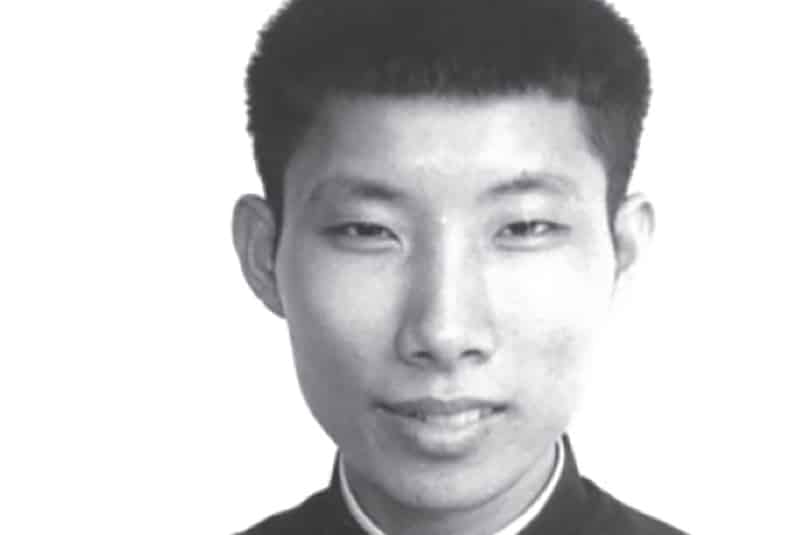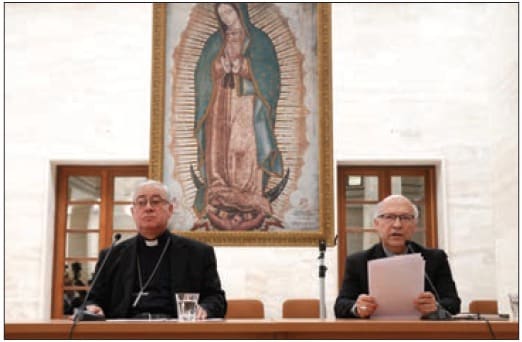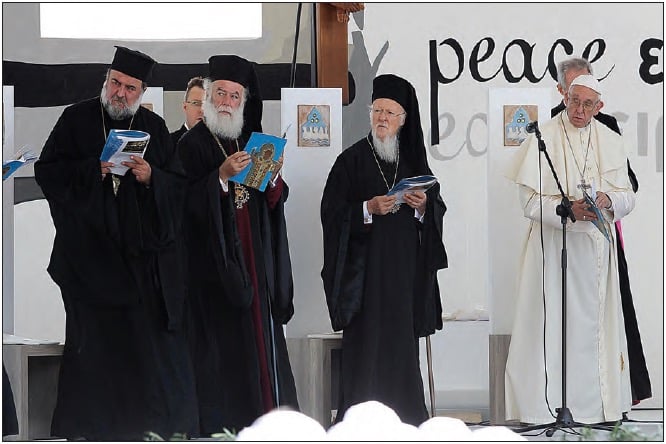Catholicism was first introduced to Vietnam by European missionaries in 1533. Despite periods of intense persecution, a significant portion of the population took to the Catholic faith. Today, 7 percent of the country is Catholic, with another 500,000 Vietnamese Catholics relocating to the United States after the Vietnam War.
The Church in Vietnam has produced many heroic figures, most notably martyr St. Andrew Dung-Lac and his companions, who were canonized by Pope St. John Paul II in 1988. Another Vietnamese Catholic gaining in notoriety is Servant of God Brother Marcel Van (1928-59), a mystic who adopted St. Thérèse of Lisieux’s “Little Way” to achieve great holiness in his short life.
Jack Keogan, an Englishman who has translated Van’s writings into English and who shares Van’s story through the website MarcelVanAssociation.com, said after first reading about Van, “I have never encountered a story of such tender love, courage, steadfastness and humor, expressed in often lyrical terms.”
Catholic author Suzie Andres, who writes a “Miss Marcel’s Musings” blog about Van, noted that Van was “human and small as we are, just as forgetful, just as unlikely a saint as each of us. And yet he had such natural communications with Jesus, Mary and Thérèse — his own favorite saint — that he inspires us to try and do the same.”
Early hardships
Van was born in the Catholic village of Ngam Giao in northern Vietnam. He had a devout Catholic mother and was attracted to the Faith and devoted to the Blessed Mother from a young age. He wanted to be a priest and share his faith with nonbelievers.
He experienced many hardships growing up, both at home and in school. His older brother, Liet, for example, was blind, which prompted his father to begin drinking heavily and start gambling. Flooding destroyed the family’s rice farm, leaving them impoverished. His deep spirituality led some at his Catholic school to envy him, leading to physical abuse. Keogan, in fact, related the story told to him by a parish deacon in Coventry, England, who, while reading Van’s autobiography, “was so moved by the cruelty of his teachers that he had to put the book down and go upstairs to reassure himself that his sleeping little boy was sleeping soundly.”
| On Marcel Van |
|---|
|
“This young man, who has experienced many emotional wounds during his childhood and youth, has been ‘weaned’ by the tenderness of his heavenly Mother, of his beloved Jesus and of his sister, Thérèse, who was so incredibly close to him. That little Jesus showers him with kisses, that Mary takes him on her knees, that he snuggles up against her breast, all these marks of affection would surprise us, nay, disturb us, if they were not encapsulated in that which is at the heart of little Van’s experience and message: his unbounded confidence in him who is Love.”
— Cardinal Christoph Schönborn, OP, archbishop of Vienna
|
Van entered the minor seminary with the French Dominicans in 1942. The Dominicans introduced Van to “The Story of a Soul” by St. Thérèse of Lisieux (1873-97). He enjoyed a unique spiritual relationship with St. Thérèse for the rest of his life, becoming her “little brother.” Keogan noted that Van had a “dogged determination” to become a priest, yet “it was left to St. Thérèse to break the news to him that it was God’s will for him that he would not become a priest, but that his vocation was to be the ‘heart of priests.'”
In 1944, at age 16, Van became a brother in a Redemptorist monastery in Hanoi. He wore the habit and took the name Brother Marcel, and served as both tailor and sacristan for the community. It was during this time that he claimed to have mystical conversations with Jesus, and recorded his revelations under the guidance of the novice master, Father Antonio Boucher.
Andres said, “Marcel’s conversations with Jesus were what mesmerized me. I am not a huge follower of private revelations, but there was something about Jesus’ voice that captured my heart and made it quite clear that this was authentic.”
She continued, “Marcel is constantly joking with Jesus, teasing and being teased by him, forgetting what [Jesus] says, not understanding what he is writing down, and answering Jesus’ deepest theological revelations with complaints about his little pains and troubles. And to this, Jesus responds with a combination of laughter, love, tenderness and compassion.”
Van also had conversations with the Blessed Mother and St. Thérèse, from whom he developed his “little way of spirituality.”
Van moved to different communities within the country and made his final profession in 1952. In 1954, the Communists took over North Vietnam, and many Catholics fled to the south. Van received permission to move to the north, however, as he sought to love God in a place where there was little love for him. He was arrested and sent to prison in 1955, and died four years later. He was 31.
Abundance of writings
Despite his young age at death, Van left an abundance of writings behind, much of it written under obedience to his superiors. These include his autobiography, correspondence and miscellaneous writings. While the material originally was written in French, Keogan began translating the writings into English more than a decade ago. He noted, “As soon as I began translating I could not believe the treasure I was unearthing as the words unfolded under my eyes. I wanted to tell anyone who would listen, and probably many who were not so keen on listening, of the story of love, courage, humor and harrowing cruelty which was evolving.”
Andres describes Van’s “conversations” as being like “getting a doctorate in prayer.” She continued, “This is not too surprising since his teacher in how to relate to God was St. Thérèse, and she is actually a Doctor of the Church. Marcel learned her lessons well, and he wants to teach them to us, too.”
Keogan added, “Not only do the conversations take our breath away by their endearing affection, but they are constantly interrupted by Jesus’ insistence that these messages of the love of God are meant for all of us.”
Van’s cause for canonization was introduced in France in 1997. It is being promoted by the French organization Les Amis de Van.
Andres concluded, “To know Van is to love him. I like the idea of introducing him to others so that he can make many, many more friends. If this eventually helps his official cause, that will be delightful. But more important to me is that people become friends with him, whether or not he is ever canonized.”







